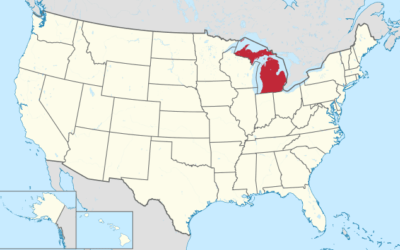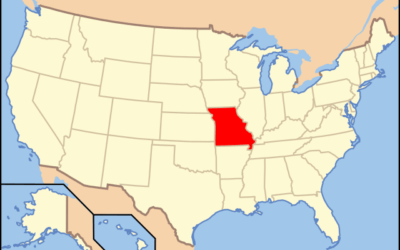Inside Alaska’s Prison System
Alaska’s prison system is an eye-opener. With an incarceration rate of 744 per 100,000, it’s higher than any other democratic country. This has big impacts on society and poses unique challenges. Imagine juggling flaming torches while riding a unicycle; that’s how it feels managing Alaska’s criminal justice system. The Alaska Justice Reinvestment Initiative aims to address these issues by reducing rates and boosting public safety. Meanwhile, the ACLU of Alaska is working to improve conditions. They’ve launched the Alaska Prison Project to help with these efforts. Plus, there’s an alarming focus on tribal youth and their higher incarceration rates. Curious about the Alaska Sentencing Commission or Alaska Rural Justice? Let’s explore these topics.

Current Inmate Population and Trends
Examining Alaska’s incarceration patterns reveals a population of about 5,400 inmates, with a rate of 744 per 100,000. This figure outpaces any other democratic nation. Over recent years, Alaska’s prison numbers have climbed, painting a stark picture of justice. The Alaska Sentencing Commission plays a role in reshaping these outcomes, while the Alaska Prison Project advocates for rights and transparency. The justice system’s complexities impact incarcerated people, with Alaska Criminal Justice reforms looming large. Eager to learn more about such initiatives? Consider North Dakota’s justice reforms, as detailed in Govering’s article. Meanwhile, Alaska Rural Justice and its unique challenges continue to unfold.
Year | Incarceration Rate | Inmate Count | Trends |
|---|---|---|---|
2010 | 650 | 4,500 | Rising |
2012 | 680 | 4,800 | Climbing |
2015 | 720 | 5,200 | Increasing |
2018 | 740 | 5,350 | Steady |
2023 | 744 | 5,400 | Stabilizing |
The increase in imprisonment rates over the last four decades in Alaska is dramatic. With a surge of incarcerated people, the system struggles to manage. The jump is a head-scratcher, leaving many speculating on the causes. Overcrowding, funding issues, and strained resources mark Alaska’s criminal justice system today. The role of the Alaska Sentencing Commission is pivotal in addressing these concerns. It aims to refine policies and reduce numbers. The Alaska Prison Project works tirelessly to improve conditions. The focus is on reform, not just punishment. With Alaska Justice Reinvestment initiatives, there’s hope for a shift towards rehabilitation.
International Comparison of Alaska’s Rates
In a global context, Alaska’s incarceration rates are sky-high, surpassing other democratic countries. With 744 out of every 100,000 Alaskans behind bars, this figure overshadows even the United States average. The magnitude of these numbers is staggering. The situation is further complicated by the overrepresentation of minorities in these statistics. The Alaska criminal justice system faces challenges that go beyond just numbers.
Efforts by organizations like the ACLU of Alaska aim to address these issues. They focus on reducing the number of incarcerated people and improving conditions. For more on thinking outside the prison box, Arnold Ventures explores unique approaches here. Addressing the situation with Tribal youth could offer broader insights.
Alaska’s prison system is a microcosm of larger societal issues. It’s like looking at a snow globe, where each flake represents a different problem swirling around. With such a high incarceration rate, it’s hard not to question what factors contribute to these numbers. Economic disparities, substance abuse, and limited access to education all play their parts. People often wonder, “Why Alaska?” The vastness and isolation of the state contribute to its challenges. When communities are miles apart and resources are thin, issues escalate quickly. The justice system finds itself in a constant battle against these odds, trying to balance enforcement with empathy. The Alaska Justice Reinvestment Initiative is a beacon of hope, aiming to turn the tide by bringing down incarceration rates and enhancing public safety.
Overrepresentation of Minorities in Prisons
Racial disparities in Alaska’s prison system highlight a stark imbalance. Minorities are overrepresented within the incarcerated population, a troubling trend that points to broader systemic issues. This is not just a fluke. It’s a reality woven into the fabric of the criminal justice system. The numbers are unsettling, showing that incarcerated people often face a justice system that doesn’t treat everyone equally.
Yet, Alaska isn’t idly watching. Initiatives address these disparities and aim for fairness. Organizations like the ACLU of Alaska strive for change and equality. They focus on not just numbers but meaningful reform. For Tribal youth, who experience higher detention rates, these changes are crucial.
Beyond Prisons: Broader Justice System
Looking at Alaska’s broader justice system shows a complex picture. It’s not just about prisons. There’s a mix of jails, immigration detention, and facilities for young offenders. Alaska’s incarceration rates have hit the roof, outpacing democratic countries. But there’s more. Racial disparities exist, with minorities overrepresented. Tribal youth face higher detention rates, pointing to deep-rooted issues. The ACLU of Alaska is in the mix, pushing for reform and fairness. They tackle not just numbers but real change. Meanwhile, policies and reforms focus on reducing incarceration and improving public safety. So, what’s next for Alaska’s criminal justice? A long road to equality and justice.
Alaska Justice Reinvestment Initiatives
Alaska’s justice reinvestment aims to reshape the criminal justice system. Policy reforms focus on reducing incarceration and boosting public safety. By tackling high incarceration rates, Alaska hopes to align with global standards. The ACLU of Alaska plays a significant role, advocating for fair treatment and pushing for change. Educational programs and community support initiatives are part of the strategy. Challenges remain, especially in addressing the needs of Tribal youth. They face unique hurdles within this system, requiring tailored solutions. Continued efforts are essential for progress. As reforms unfold, Alaska’s approach may serve as a model for other regions, showcasing effective change through collaborative efforts.
Role of ACLU in Alaskan Prisons
The ACLU of Alaska plays a pivotal role in reshaping the state’s prison dynamics. Their efforts focus on reducing the number of incarcerated people and enhancing prison conditions. Through advocacy and legal action, they push for transparency and accountability within the system. Alaska Incarceration Facts reveal a complex tapestry of challenges, including issues faced by Tribal youth. The organization’s initiatives aim to address these disparities, ensuring fair treatment for all. They are a critical voice in pushing for reforms that align with global standards. For a deeper dive into these issues and the broader context, the 2021 Profile of Alaska’s Corrections offers comprehensive insights.

Sentencing and Policy Changes
Recent adjustments in sentencing laws and policies have sparked notable shifts. Alaska’s incarceration rates are influenced by these changes, with a focus on reducing recidivism. For instance, policies now emphasize rehabilitation over purely punitive measures. This shift reflects a broader understanding of Alaska Incarceration Facts and the challenges faced by incarcerated people. The involvement of the ACLU of Alaska has been pivotal in advocating for these reforms. Their initiatives aim to create a fairer environment by addressing systemic issues. On a related note, efforts are ongoing to address disparities affecting Tribal youth within the Alaska criminal justice system. This highlights a commitment to ensuring equitable treatment across various demographics.
Tribal Youth and Incarceration Disparities
In Alaska, the discrepancies in youth incarceration rates remain a pressing issue. Tribal youth face significantly higher detention rates compared to their peers. This trend underscores the deep-rooted challenges within the system. Alaska Incarceration Facts reveal that while efforts are underway to address these disparities, much remains to be done. The overrepresentation of minorities, including Tribal youth, paints a stark picture of inequality. Community-based programs aim to provide better alternatives, yet systemic barriers persist. The need for tailored approaches to support Tribal youth is critical. As reforms continue, Alaska must prioritize equitable solutions to ensure justice for all youth.
Key Issue | Tribal Youth | White Youth | Initiatives |
|---|---|---|---|
Detention Rate | Higher | Lower | Community Programs |
Systemic Barriers | Present | Fewer | Tailored Solutions |
Inequality | Significant | Less | Prioritized Reforms |
Overrepresentation | High | Low | Equitable Policies |
Rehabilitation and Reentry Efforts
Efforts to transition inmates smoothly back into the community are crucial in Alaska. Programs focus on equipping them with skills and counseling to aid their reintegration. The main goal? Minimize recidivism. Alaska, known for its unique challenges, has tailored these efforts to meet local needs, making them both diverse and practical.
A standout example is the initiatives at Spring Creek. Here, there’s a strong emphasis on humane treatment and readiness for life post-incarceration. Participants engage in educational and vocational training, aiming for a fresh start.
Alaska Incarceration Facts highlight the importance of these initiatives. With such high incarceration rates, these programs are not just beneficial—they’re imperative for societal harmony.
Alaska Prison Project and Its Impact
Addressing the Alaska Incarceration Facts, the Alaska Prison Initiative seeks transformative changes. It aims for fewer prisoners and better transparency. The project is reshaping the Alaska criminal justice system, with long-term benefits in sight. By focusing on humane treatment, this initiative creates a ripple effect that impacts policies and society. It challenges outdated practices and embraces modern, compassionate approaches.
For instance, transparency is becoming a cornerstone, ensuring accountability at all stages. It’s like opening a window to let fresh air into a stuffy room. Focusing on these changes might seem like a tall order, but the project is making strides. Through collaboration and innovation, the goal is to create a safer, more just society for all.





0 Comments